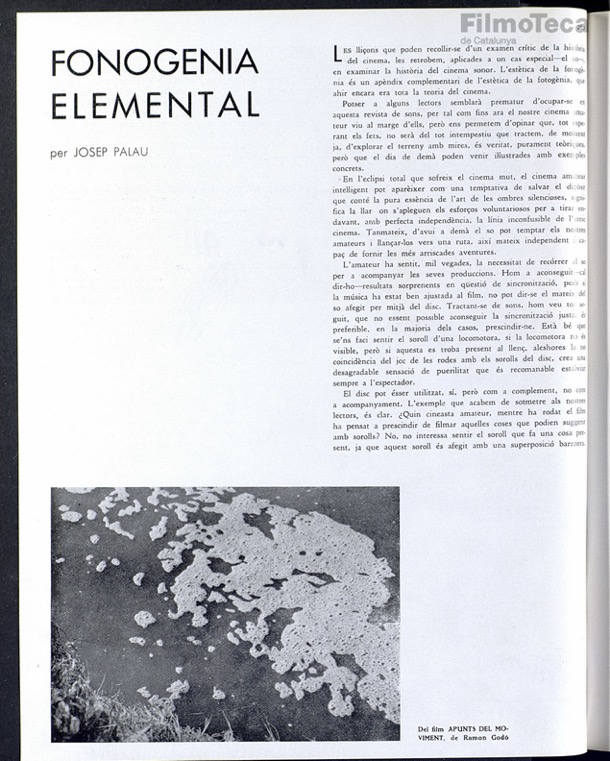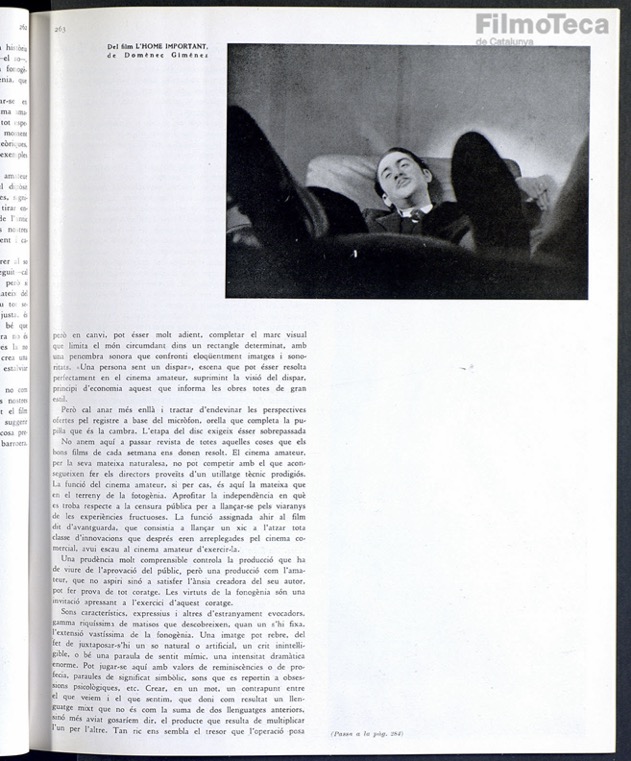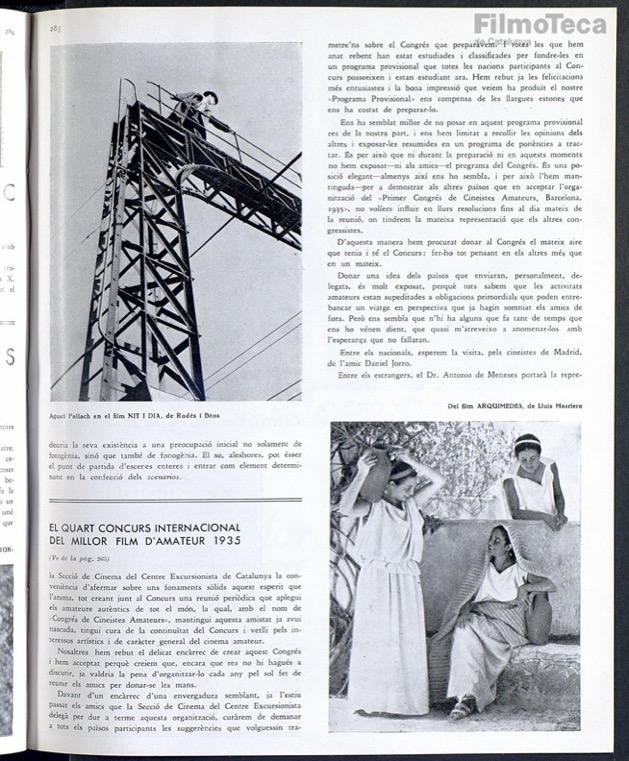Elemental Phonogénie
Josep Palau (translated by Enrique Fibla Gutiérrez)
Cinema Amateur, 8, Spring 1935, p. 262
The lessons gathered by a critical examination of the history of cinema resonate when applied to the special case of sound. The aesthetics of “phonogénie,” for instance, is an appendix to the aesthetics of photogénie, which just yesterday encompassed the entirety of the theory of cinema.
Perhaps some readers will think that it is still premature to talk in this journal about sound, since until now our amateur cinema has existed apart from it. But we allow ourselves to suggest that, even if it has not arrived yet, it is not at all ungodly to explore the terrain with an eye toward merely theoretical reflection, although one which will soon be illustrated with actual examples.
In the total eclipse that silent cinema suffers, an intelligent amateur cinema can appear as an attempt to save the pure essence of the art of silent shadows, building a home that gathers the willful efforts to continue, independently, the unmistakable ethos of an older cinema. At the same time, the sound of tomorrow can tempt our amateurs and propel them towards an independent, adventurous, and risky route.
The amateur filmmaker has felt a thousand times before now the pressure to turn to sound to accompany his productions. Some have achieved surprising results with synchronization; however, if often music has been well adjusted to a film, the same cannot be said about sound added via disc. When speaking about sound cinema, one quickly realizes that if proper synchronization is not possible, it is better to do without sound. It is ok to hear a locomotive if we cannot see it, but if it is present on the screen, then the desynchronization of the train wheels with sound-on-disc creates an unpleasant sensation of puerility in the spectator, one which it is always best to avoid.
Sound-on-disc can be used, of course, but only as complement, not as accompaniment. How many amateur filmmakers have considered avoiding filming what they can only evoke by means of sound? No, it is not useful to hear an object on screen since this sound is added sloppily. But it can be quite useful instead to complement the purely visual with a textured audio that eloquently assembles meaning from sound and image.
“A person hears a shot.” This scene can be resolved perfectly in amateur cinema by eliminating the view of the shot and opting for a principle of economy such as the one that informs every work of great style. But one must go further and try to find out the perspectives offered by the microphone, this ear that complements the pupil that is the camera. The era of the disc must end.
We are not going to go over everything that the best films of each week largely resolve. Amateur cinema, by its own nature, cannot compete with what the great directors, with their prodigious technical support, can achieve. The function of amateur cinema, if any, is the same as it is in the terrain of photogénie. It must take advantage of its independence regarding censorship, in order to plunge forward onto the most fruitful path. The function yesterday assigned to the avant-garde film, namely, experimenting with many innovations that would become appropriated by commercial cinema, now has fallen onto the shoulders of amateur cinema.
A readily grasped sense of caution dictates the production of films that survive according to public approval. But in amateur filmmaking, which aspires only to satisfy the creative thirst of its author, the producer can afford to be more courageous. The virtues of phonógenie are an invitation to exercise this essential courage characteristic of the amateur.
The rich range of nuance in the cinematic expansion of phonógenie includes iconic, expressive, and evocative sounds. An image can convey, when juxtaposed with a natural or artificial sound, an incomprehensible scream. But it can also construe a mimicked sense of immense dramatic intensity. One can play here with reminiscences or prophecies, words with symbolic meaning, sounds that convey psychological obsessions, etc. One can create, in a word, counterpoint between what is seen and felt, resulting in a hybrid language that is not merely the result of combining two already existing languages (image and sound) but rather is the product of multiplying one by the other. In the hands of the true creative artist, this operation is treasured.
Once the amateur has resolved technical issues with the synchronous register of sound, he will then be able to cultivate this new poetry, dedicated to convening a cenacle of independent spirits. Because if poetry is born from uniting diverse things, obtaining from these contacts the spark of joy and beauty, then what marvelous poetry awaits us from the collision of sounds with images. Oh! Not a cinema that incorporates sound as a servant, but a cinema in which sound plays a capital role, a cinema born of concern not only with photogénie but also with phonogénie. Sound, then, can be a starting point for whole scenes and become a determinant factor in the confection of scenarios.



